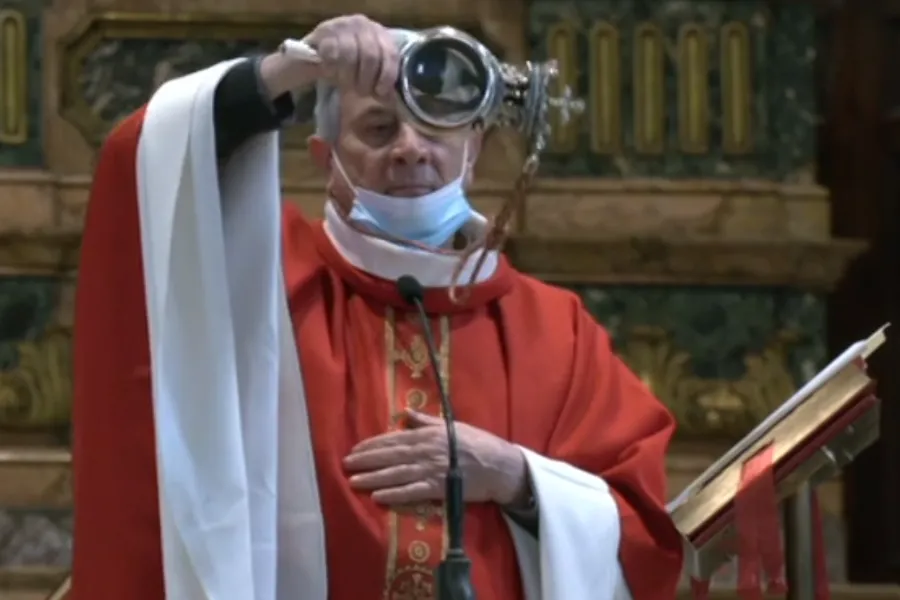
Naples, Italy, Dec 16, 2021 / 11:55 am
The blood of St. Januarius liquefied on Thursday after a day of intense prayer in the Italian city of Naples.
The newspaper Il Messaggero reported that the miracle took place on the evening of Dec. 16.
It quoted the Museum of the Treasure of San Gennaro as saying: “After an entire day of prayers and the constant intonation of the ancient song of the ‘relatives’ of St. Januarius, who since this morning have invoked the dissolution of the solid blood clot, the miracle of St. Januarius took place at 5:59 p.m. today.”
The museum confirmed the news in a post on its Facebook page.
During the miracle, the dried, red-colored mass confined to one side of a reliquary becomes blood that covers the entire glass. In local lore, the failure of the blood to liquefy signals war, famine, disease, or other disaster.
The reputed miracle is locally known and accepted, though it is yet to receive official Church recognition.
The liquefaction traditionally happens at least three times a year: Sept. 19, the saint’s feast day, the first Saturday of May, and Dec. 16, the anniversary of the 1631 eruption of nearby Mount Vesuvius.
The third-century bishop’s blood, contained in a circular sealed vial, liquefied in both May and September this year, but did not change its state in December 2020.

The blood of St. Januarius, patron of Naples, had remained solid on Thursday morning.
Msgr. Vincenzo de Gregorio, abbot of the Royal Chapel of the San Gennaro Treasure, opened a safe containing the reliquary at 9 a.m. local time on Dec. 16, according to local media.
The reliquary was displayed in the sanctuary of the Cathedral of the Assumption of Mary during morning Mass.
At the end of the Mass, the blood was checked for a second time but remained solid.
The bones and blood of St. Januarius — San Gennaro in Italian — are preserved as relics in Naples Cathedral.
The bishop of the southern Italian city is believed to have been martyred during Diocletian persecution.
Dec. 16 marks the anniversary of Naples’ preservation from the 1631 eruption of Mount Vesuvius. Locals credited the saint with saving them.
According to an Italian journalist, it is unusual for the miracle to take place on Dec. 16. The blood has liquefied most often on St. Januarius’ feast day of Sept. 19, and on the Saturday before the first Sunday of May.
Vatican journalist Francesco Antonio Grana told CNA last year that the liquefaction “almost never” happens on Dec. 16 and that in the last 34 years the number of times it has happened “can be counted on one hand.”
If you value the news and views Catholic World Report provides, please consider donating to support our efforts. Your contribution will help us continue to make CWR available to all readers worldwide for free, without a subscription. Thank you for your generosity!
Click here for more information on donating to CWR. Click here to sign up for our newsletter.





Leave a Reply